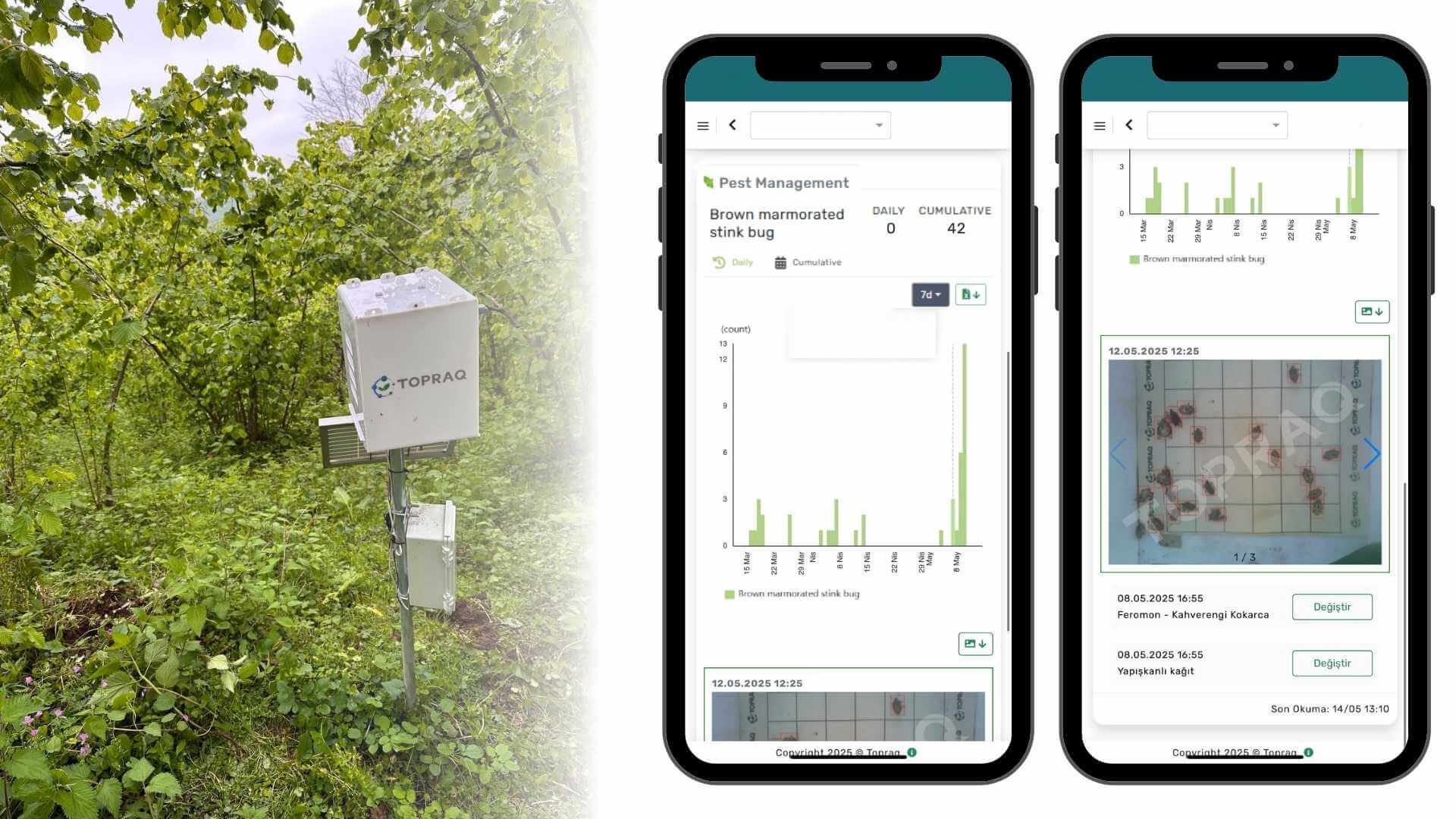The brown marmorated stink bug (Halyomorpha halys) has recently become a major threat for fruit and vegetable farmers, especially hazelnut growers. Considering the long-term effects and environmental hazards of chemical pesticides, natural control methods for stink bugs have become increasingly important for both growers and the environment. So, what are the most effective and eco-friendly ways to fight this pest?
What Is the Brown Marmorated Stink Bug?
Originating from Asia, the brown marmorated stink bug (Halyomorpha halys) is an invasive insect pest known for damaging fruit trees such as hazelnut, apple, pear, and peach. Its hard-shelled body, unpleasant odor, and high reproductive capacity make it a challenging pest to manage. It typically lays eggs under leaves, on fruit skins, or on young shoots.
Let’s Talk – Share Your Contact Information!
How to Get Rid of Stink Bugs Naturally?
You don’t need to rely on chemical sprays to achieve effective stink bug control. Especially for environmentally conscious farmers, these organic stink bug treatment methods help preserve the ecosystem and provide sustainable pest control in the long term. Here are some proven natural solutions:
Support Beneficial Insects
Biological control of stink bugs involves supporting populations of natural enemies, especially egg parasitoids such as Trissolcus japonicus. These beneficial insects parasitize stink bug eggs and help reduce their population. Avoiding chemical pesticides allows these natural enemies to survive and thrive in the ecosystem. Maintaining habitat diversity also boosts their impact.
Use Stink Bug Pheromone Traps
Stink bug pheromone traps use chemical attractants that mimic mating signals to lure and trap the bugs. These traps are effective tools for monitoring and reducing populations without chemicals. They also help track the pest’s regional spread and guide strategic pest management planning.
Increase Plant Diversity
Monoculture fields are more vulnerable to stink bug infestations. Therefore, increasing plant diversity through intercropping, edge planting, and buffer strips can limit their spread. A diverse plant ecosystem makes it harder for stink bugs to locate host plants and creates a better environment for natural enemies.
T-Trap Digital Pheromone Trap: Real-Time Monitoring
T-Trap is an innovative, tech-powered stink bug control tool. This digital pheromone trap detects stink bug presence instantly in the field and records data with sensor-based technology.
- Monitors stink bug population density in real time
- Alerts growers before the pest reaches economic thresholds
- Allows pest control planning without immediate pesticide use

Thanks to its precision, T-Trap minimizes pesticide use, protects the environment, and maintains fruit quality. It serves as a digital decision support system in natural pest control strategies.
When to Use Stink Bug Pesticide?
Some farmers still consider using stink bug insecticides to suppress populations. However, indiscriminate chemical spraying can disrupt ecological balance and lead to resistance. Always assess population levels through monitoring tools like pheromone traps before deciding to spray.
Damages Caused by Brown Marmorated Stink Bug
This pest causes significant economic and ecological damage, including:
- Fruit and leaf deformation: Stink bug feeding causes spotting, wrinkling, and tissue collapse
- Yield loss: Reduces both the number and quality of harvestable fruits
- Export restrictions: Presence of stink bugs may lead to rejection in export markets, especially in Europe
- Ecological imbalance: Can lead to secondary pest outbreaks
Smart Pest Control with T-Trap
One of the most effective stink bug control tools is pheromone-based traps. Digital solutions like T-Trap not only capture stink bugs but also provide:
- Real-time pest population data
- Early warning notifications
- Reduced need for chemical pesticides
As an eco-friendly stink bug solution, T-Trap merges natural pest control with digital innovation, helping growers act early and responsibly.
Sustainable stink bug management depends on eco-conscious methods. Supporting beneficial insect populations, increasing plant diversity, and using smart monitoring systems are effective strategies. T-Trap offers a powerful, technology-driven solution that aligns with modern natural farming practices.

